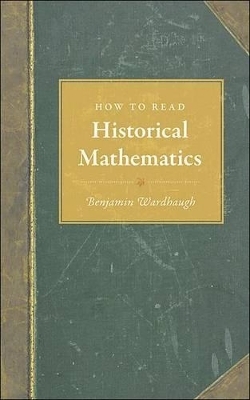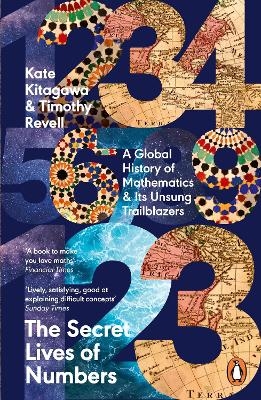
How to Read Historical Mathematics
Seiten
2010
Princeton University Press (Verlag)
9780691140148 (ISBN)
Princeton University Press (Verlag)
9780691140148 (ISBN)
- Lieferbar (Termin unbekannt)
- Versandkostenfrei
- Auch auf Rechnung
- Artikel merken
Writings by early mathematicians feature language and notations that are quite different from what we're familiar with today. Sourcebooks on the history of mathematics provide some guidance, but what has been lacking is a guide tailored to the needs of readers approaching these writings for the first time. This book intends to fill this gap.
Writings by early mathematicians feature language and notations that are quite different from what we're familiar with today. Sourcebooks on the history of mathematics provide some guidance, but what has been lacking is a guide tailored to the needs of readers approaching these writings for the first time. How to Read Historical Mathematics fills this gap by introducing readers to the analytical questions historians ask when deciphering historical texts. Sampling actual writings from the history of mathematics, Benjamin Wardhaugh reveals the questions that will unlock the meaning and significance of a given text--Who wrote it, why, and for whom? What was its author's intended meaning? How did it reach its present form? Is it original or a translation? Why is it important today? Wardhaugh teaches readers to think about what the original text might have looked like, to consider where and when it was written, and to formulate questions of their own. Readers pick up new skills with each chapter, and gain the confidence and analytical sophistication needed to tackle virtually any text in the history of mathematics.
* Introduces readers to the methods of textual analysis used by historians * Uses actual source material as examples * Features boxed summaries, discussion questions, and suggestions for further reading * Supplements all major sourcebooks in mathematics history * Designed for easy reference * Ideal for students and teachers
Writings by early mathematicians feature language and notations that are quite different from what we're familiar with today. Sourcebooks on the history of mathematics provide some guidance, but what has been lacking is a guide tailored to the needs of readers approaching these writings for the first time. How to Read Historical Mathematics fills this gap by introducing readers to the analytical questions historians ask when deciphering historical texts. Sampling actual writings from the history of mathematics, Benjamin Wardhaugh reveals the questions that will unlock the meaning and significance of a given text--Who wrote it, why, and for whom? What was its author's intended meaning? How did it reach its present form? Is it original or a translation? Why is it important today? Wardhaugh teaches readers to think about what the original text might have looked like, to consider where and when it was written, and to formulate questions of their own. Readers pick up new skills with each chapter, and gain the confidence and analytical sophistication needed to tackle virtually any text in the history of mathematics.
* Introduces readers to the methods of textual analysis used by historians * Uses actual source material as examples * Features boxed summaries, discussion questions, and suggestions for further reading * Supplements all major sourcebooks in mathematics history * Designed for easy reference * Ideal for students and teachers
Benjamin Wardhaugh is a postdoctoral research fellow at All Souls College, University of Oxford. He is the author of "Music, Experiment, and Mathematics in England, 1653-1705".
Preface vii Chapter 1: What Does It Say? 1 Chapter 2: How Was It Written? 21 Chapter 3: Paper and Ink 49 Chapter 4: Readers 73 Chapter 5: What to Read, and Why 92 Bibliography 111 Index 115
| Zusatzinfo | 5 halftones. |
|---|---|
| Verlagsort | New Jersey |
| Sprache | englisch |
| Maße | 127 x 203 mm |
| Gewicht | 227 g |
| Themenwelt | Mathematik / Informatik ► Mathematik ► Geschichte der Mathematik |
| ISBN-13 | 9780691140148 / 9780691140148 |
| Zustand | Neuware |
| Informationen gemäß Produktsicherheitsverordnung (GPSR) | |
| Haben Sie eine Frage zum Produkt? |
Mehr entdecken
aus dem Bereich
aus dem Bereich
a global history of Mathematics & its Unsung Trailblazers
Buch | Softcover (2024)
Penguin Books Ltd (Verlag)
CHF 22,65
How We Navigate the World Through Numbers
Buch | Softcover (2025)
Picador (Verlag)
CHF 22,65


